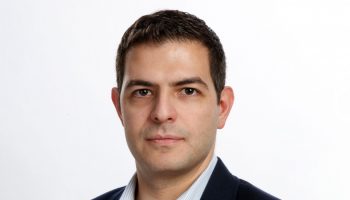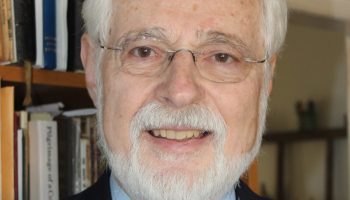Immigration has been a part of society for centuries, and there’s always a sense of assimilation to navigate. Laura Limonic, author and professor of sociology at SUNY College at Old Westbury, addresses the struggles of Latin American Jewish immigration in the United States.
She will give her lecture, titled “Becoming Latinx Jews: An American Immigration Story,” at 2 p.m. Wednesday, Aug. 24 in the Hall of Philosophy for Week Nine of the Interfaith Lecture Series, “Faith and the Tapestry of the Future,” which is in partnership with Smithsonian Folklife Festival.
Limonic, the author of Kugel and Frijoles: Latino Jews in the United States, which won the 2020 Best Book in Latin American Jewish Studies, is going to focus on Latin American Jewish immigrants and their stories of assimilation through reconstructing ethnic religion.
“I hope that people take away the idea that religion is in many ways bound,” Limonic said. “While it’s global, it’s very much bound to the location in which the people are found in. It’s influenced by the social and political and economic systems of the countries where religious groups are found.”

Her studies examine what happens to Latin American Jewish immigrants when they come to the United States and how they acclimate via religion.
“New immigrants participate in religious life and are both influenced by existing structures and also contribute to changing the nature of religious identity and religious organizations,” Limonic said.
Originally from Argentina, Limonic said she also looks at the stories of her own family and thinks about how they navigated their way as Latin American Jews — and the identity struggle that it involved.
“I think that one of the outcomes that we are beginning to see is a return to religiosity, to high levels of religiosity as people become sort of disillusioned with the current state of the social and political system here in the United States — it’s also a way of belonging,” she said.
Historically, religious organizations have given immigrants a way to be a part of a community and retain, or regain, a sense of self.
“One of the reasons we have religious pluralism here in the United States, and so many religious groups have been able to thrive, is in many ways because of the separation of church and state,” Limonic said. “Nonetheless, we continue to be a highly racialized country.”
She said as religion is racialized, certain religions are part of a larger civil religion: the idea of one nation under God, but it isn’t always the same God.
“I think that our racial history, our current racial system, and racist system, contributes to what is allowed under the separation of church and state and what’s allowed to be part of a larger civil religion,” Limonic said.




